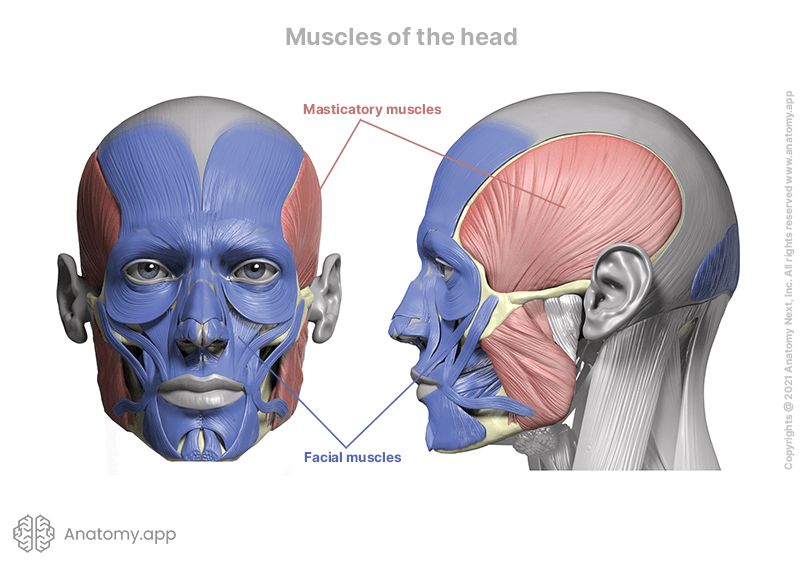- Anatomical terminology
- Skeletal system
- Joints
- Muscles
- Head muscles
- Neck muscles
- Muscles of upper limb
- Thoracic muscles
- Muscles of back
- Muscles of lower limb
- Heart
- Blood vessels
- Lymphatic system
- Nervous system
- Respiratory system
- Digestive system
- Urinary system
- Female reproductive system
- Male reproductive system
- Endocrine glands
- Eye
- Ear
Head muscles
The muscles of the head (Latin: musculi capitis) can be grouped into two categories - the muscles of mastication (masticatory muscles) and muscles of facial expression (facial muscles). The first group includes the derivatives of the first pharyngeal arch, but the muscles of facial expression are derivatives of the second pharyngeal arch.

Because of their different embryological development, the two groups of head muscles are supplied by two different cranial nerves. Most of the muscles of the head belong to the facial muscles and are innervated by the facial nerve (CN VII). In contrast, the four masticatory muscles are innervated by the mandibular nerve (CN V3).